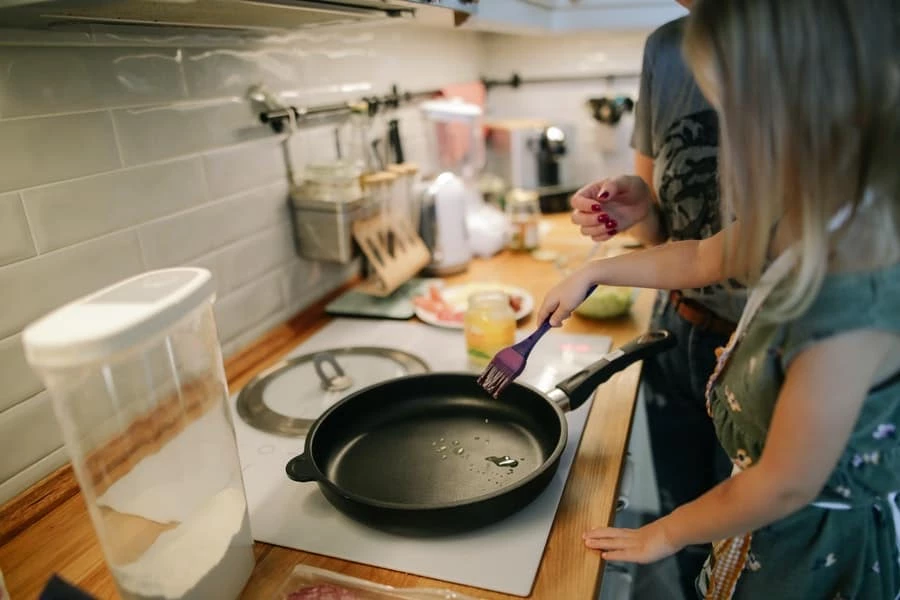Are You Using Your Non-Stick Frying Pan Properly?
Share

Non-stick frying pans are essential for every kitchen. These pans allow you to easily fry eggs, fish and any vegetables that tend to stick to the pan. With its specially designed surface, you’ll never end up burning your meal. But to achieve this, you will need to use your non-stick frying pan properly. Below, we explore how.
What Should I Avoid?
For a start, you shouldn’t treat your non-stick frying pan like a stainless-steel pan. Your non-stick pan will come with a special coating on the surface to avoid sticking. This surface can easily be damaged if you scrape metal utensils against it. You should also avoid using aerosol cooking sprays on this surface, as they can build up as residue on the coating. Meanwhile, when it comes to storing your non-stick pans, you should place paper towels between them to protect the coating. Finally, you should avoid placing your pan in water immediately after using it: instead, allow the pan to cool right down over a few hours before washing it.
What Should I Remember?
There are plenty of things to remember when looking after your non-stick pan, though. For a start, when you buy it you should read up on its tolerance to high heat. Some non-stick pans won’t work well under the highest heat as they’ll lead to the deterioration of the non-stick surface. However, some quality pans will have a much higher tolerance and you’ll even be able to use them in the oven. Nevertheless, you should always remember to be patient with your non-stick pan: when cooking veggies, use a slightly lower heat and allow them to slowly caramelise. Finally, it’s important to avoid pre-heating an empty non-stick pan. Instead, you should add a little vegetable oil and gently heat it up.
How To Maintain Your Non-Stick Pan
There are also measures you can take to ensure that your non-stick pan lasts for a long time. For a start, when you’re cleaning the pan, always use a soft dishrag as abrasive materials can damage the surface. You should also avoid using the dishwasher as the hot water and harsh detergent can damage it. Along the same lines, when you’re stacking your pan after washing it, avoid chipping the surface against other kitchenware. Finally, if you’re struggling with food that won’t come off, you can make a baking soda paste and remove it easily with a non-abrasive brush.
Non-stick pans can help you cook your favourite signature dish with aplomb. And by following the advice above, you’ll be able to maintain your pan and enjoy it for years to come.













